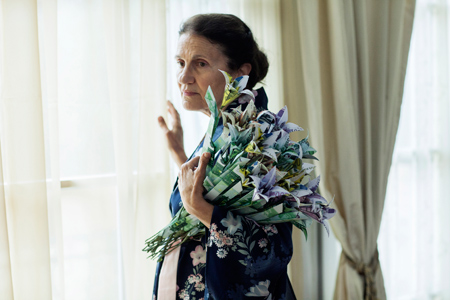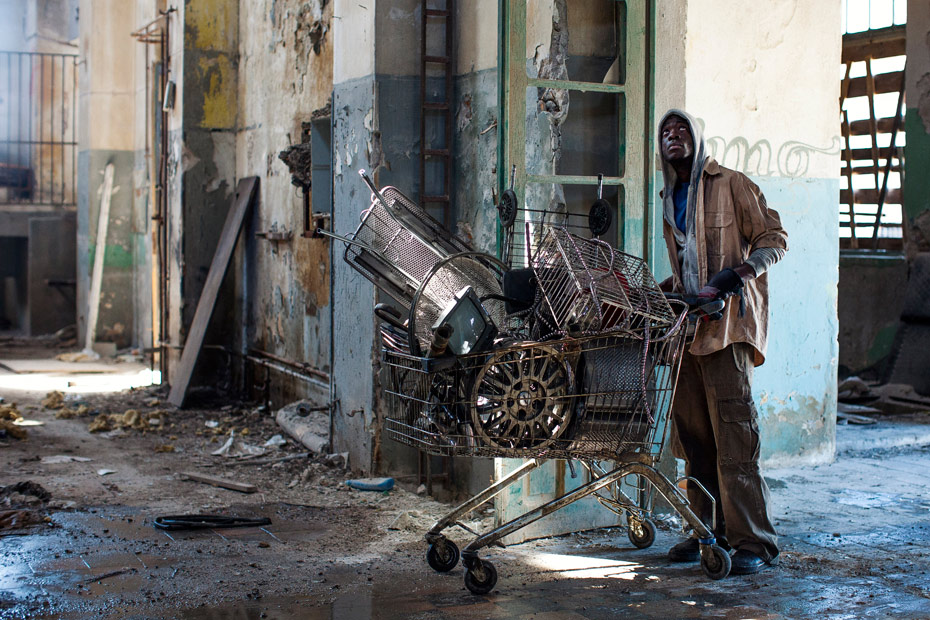- The Greek Pavilion at the Italian art fair offers visitors a new approach to the country’s financial crisis

Words Anna BattistaAll images: Stefanos Tsivopoulos, History Zero video stills, 2013. Courtesy of the artist, Kalfayan Galleries, Prometeogallery di Ida PisaniIn Stefanos Tsivopoulos’ practice, archival research and visual resource are not contrasting parts of a dichotomic approach, but they represent related spheres that the Prague-born, but Athens and Amsterdam-based artist dialectically employs in his work.
Tsivopoulos’ modus operandi worked well in developing the project for the Greek Pavilion at the 55th International Venice Art Biennale. The Encyclopedic Palace, the main theme of this year’s event directed by Massimiliano Gioni, is borrowed from self-taught artist Marino Auriti who designed in the 50s an imaginary museum meant to house all worldly knowledge. Entitled History Zero, the project features archival material about different currencies – from barter, beer or shell money to microfinance, mobile money and bitcoins. A film in three parts tackles the theme of money and currency value giving it an ironic twist: an elderly art collector suffering from Alzheimer’s disease spends her time making origami flowers with euro banknotes; a young immigrant from Africa collects scrap metal with a supermarket trolley, while an artist randomly walks around Athens taking pictures on his iPad. The art collector’s origami flowers assume a new value when the young immigrant surprisingly finds them in a rubbish bin, while his “gold”, that is the supermarket trolley full of scrap metal, becomes an inspiring treasure in the hands of the visionary artist.

- “The idea for the pavilion was obviously related to the crisis in Greece, but I wanted to make sure that the issue was analysed from a completely different perspective that prompted us to ponder and analyse economy, the value of money and our position in relation to that,” Stefanos Tsivopoulos recounts. “There was no point in showing the crisis in a way that victimises Greece or focusing on all the side effects that we have grown accustomed to know. So a key point for me was taking a step back from all this and wondering how a crisis is generated, what do we mean when we talk about it and what lies behind the very idea of crisis.”
Tsivopoulos first got the inspiration for this project last year and, while talks with the pavilion curator Syrago Tsiara followed in Autumn 2012, his intensive filming incidentally began in February this year, when youth unemployment shot to a record 64 percent in Greece.



The film does not feature any data about the tragically high unemployment rates in the eurozone, and there are no images of demos and protesters. In fact there is an almost blissful calm in the gestures repeated by the characters in the film, from the art collector in her silk kimono ritually folding her origami blossoms to the immigrant routinely looking for metal and the artist taking random pictures.When the pavilion opened at the end of May for the Biennale press days, the news reported that the OECD forecast Greece entering its seventh year of recession in 2014. Financial instability and recession are not directly tackled in the film, but they are implied in the young immigrant’s condition and are explored in a wider way in the information on the circular walls of the pavilion. Tsivopoulos worked a bit like a historian, researching and compiling this global archive that analyses the use, fetishisation and devaluation of money.“The crisis for me has to do with the change of value and the way we perceive or approach value: as the alternative currencies included in this part prove, value has been contested by different cultures, communities and societies,” he states. This part of the pavilion is also a manifesto of our obsession with value in times of recession. “The information on display propose an approach that goes beyond the historisation of economies and communities,” Tsivopoulos points out.
It’s easy to wonder if, after his research the artist may have found a way out of the global crisis. “I’m not a politician so I wouldn’t be able to answer this question,” he promptly replies, “but I conceive my work as looking inside myself and finding a relation between who I am and what is happening around me. What I can do is presenting my point of view through my work, being very honest with my critique and keeping on inspiring other ordinary human beings.”
The 55th International Venice Art Biennale runs until 24th November 2013
Subscribe to Port Magazine annually and receive each issue to your door.
Get PORT in print



